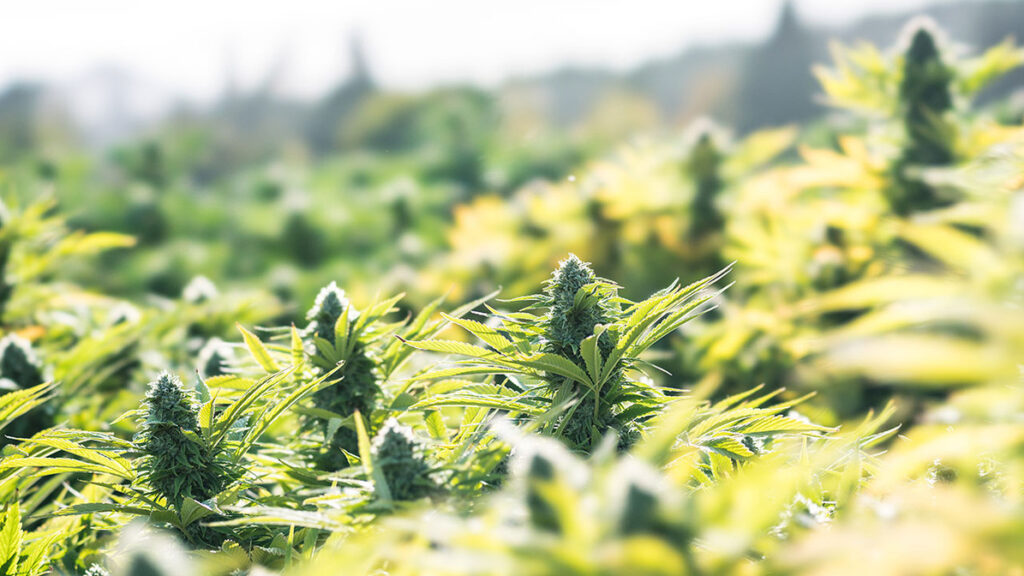Introduction
Growing cannabis outdoors offers numerous advantages, including ample space, natural sunlight, and reduced costs compared to indoor cultivation. However, successful outdoor cultivation requires careful consideration of soil preparation. The soil serves as the foundation for healthy plant growth, providing essential nutrients, moisture retention, and a supportive environment for root development. In this guide, we’ll explore the steps involved in preparing soil for growing cannabis outdoors, from site selection to soil amendment techniques.
Site Selection
Choosing the right location is paramount for successful outdoor cannabis cultivation. Consider the following factors when selecting a site:

- Sunlight Exposure: Cannabis plants require ample sunlight for optimal growth and flowering. Choose a site that receives at least 6 to 8 hours of direct sunlight per day.
- Drainage: Ensure that the chosen site has good drainage to prevent waterlogging, which can lead to root rot and other issues. Avoid areas prone to flooding or water accumulation.
- Soil Quality: Assess the soil quality of the site, including its texture, pH level, and nutrient content. While cannabis can thrive in various soil types, well-draining loamy soil with a pH of 6.0 to 7.0 is ideal.
Soil Testing
Before planting cannabis outdoors, conduct a soil test to determine its pH level and nutrient composition. Soil testing kits are readily available at garden centers or can be performed by agricultural extension services. The results will guide you in making informed decisions about soil amendments and fertilization.
Soil Amendment
Once you’ve assessed the soil quality, you may need to amend it to create an optimal growing environment for cannabis. Common soil amendments include:
- Compost: Incorporating organic compost into the soil improves its structure, fertility, and water retention capacity. Compost also introduces beneficial microorganisms that aid in nutrient cycling and plant health.
- Perlite or Vermiculite: Adding perlite or vermiculite to the soil improves aeration and drainage, preventing compaction and waterlogging.
- Peat Moss: Peat moss helps retain moisture in the soil while improving its texture and nutrient retention capabilities.
- Lime or Sulfur: Adjust the soil pH as needed by adding lime to raise pH or sulfur to lower pH to the optimal range for cannabis growth.
Soil Preparation
Prepare the soil for planting by following these steps:
- Clear the Area: Remove any weeds, rocks, or debris from the planting site to create a clean growing space for cannabis.
- Till the Soil: Use a rototiller or garden fork to loosen the soil to a depth of 12 to 18 inches. This improves soil aeration, root penetration, and nutrient uptake.
- Incorporate Amendments: Mix the soil amendments thoroughly into the tilled soil, ensuring an even distribution throughout the planting area.
- Create Raised Beds (Optional): Consider building raised beds for outdoor cannabis cultivation, especially in areas with poor soil quality or drainage issues. Raised beds improve soil drainage, warmth, and accessibility for maintenance.
Mulching
Applying mulch to the soil surface offers numerous benefits for outdoor cannabis cultivation:
- Moisture Retention: Mulch helps retain soil moisture by reducing evaporation, minimizing the need for frequent irrigation
- Weed Suppression: A layer of mulch suppresses weed growth, reducing competition for nutrients and water.
- Soil Temperature Regulation: Mulch insulates the soil, protecting it from temperature fluctuations and promoting optimal root growth.
Watering and Maintenance
After preparing the soil, water the planting area thoroughly to ensure adequate moisture for seed germination or transplanting. Monitor soil moisture levels regularly and water as needed to prevent drought stress. Additionally, incorporate organic fertilizers or compost tea into your cultivation regimen to provide nutrients for healthy plant growth.
Read Also : High CBD Cannabis Seeds: Answering Common Questions for First-Time Growers
Conclusion
Proper soil preparation is essential for successful outdoor cannabis cultivation. By selecting a suitable site, conducting soil tests, amending the soil as needed, and implementing mulching techniques, you can create an optimal growing environment for your cannabis plants. Remember to monitor soil moisture, nutrient levels, and plant health throughout the growing season to ensure robust growth and high-quality yields. With careful soil preparation and maintenance, you can cultivate healthy and thriving cannabis plants outdoors.
